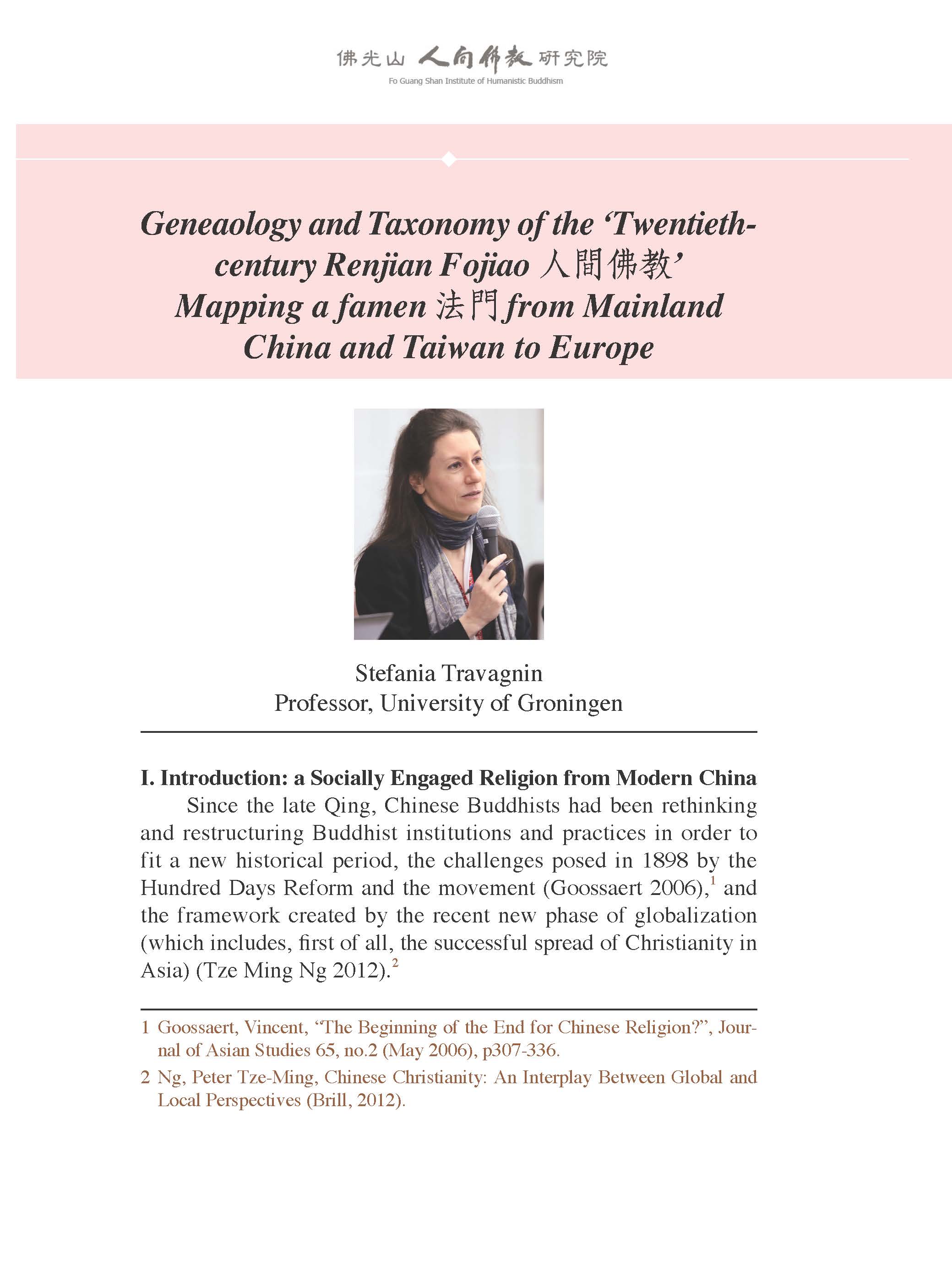
|
Geneaology and Taxonomy of the ‘Twentieth-century Renjian Fojiao 人間佛教’Mapping a famen 法門 from Mainland China and Taiwan to Europe
作者
Stefania Travagnin
單位職稱
Professor, University of Groningen
編者
程恭讓、妙凡法師總編輯
摘要
The first part of this paper will discuss concepts and practice of‘twentieth-century renjian fojiao’; it will start analyzing theoretical meanings and doctrinal implications of renjian fojiao in modern and contemporary Mainland China and Taiwan, and assess various case studies of ‘renjian fojiao in practice’ among Buddhist communities since the Republican period onwards and also from the pre-modern Imperial time. I will attempt a taxonomy of these principles and practices, and then ponder whether this renjian fojiao should not be classified as an overall ‘school’(zongpai 宗派) but considered rather as a ‘Dharma gate’ (famen 法門). Secondly, I will consider the transmission of renjian fojiao to Europe, more precisely the Netherlands, in particular I will look at how (Mainland China) Longquan monastery 龍泉寺 (located in Utrecht) and (Taiwan) Fo Guang Shan 佛光山 (located in Amsterdam) are adopting and adapting ‘twentieth-century renjian fojiao’ in the Netherlands. Finally, this paper will conclude by questioning how ‘twentieth-century renjian fojiao’ could be more present in international platforms that are working towards conflict resolutions and peace building, and therefore could intervene and facilitate dialogue and constructive interaction among different cultures and religions in today’s globalized and pluralistic society.
引文
Stefania Travagnin, " Geneaology and Taxonomy of the ‘Twentieth-century Renjian Fojiao 人間佛教’Mapping a famen 法門 from Mainland China and Taiwan to Europe, " 2016人間佛教高峰論壇──人間佛教的共識 (2017): 3-25
全文下載











